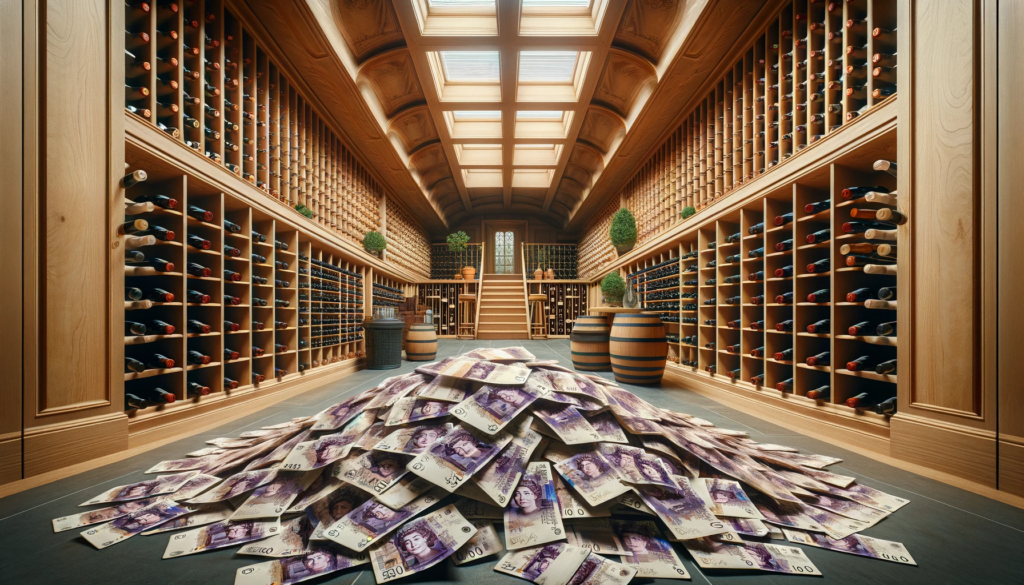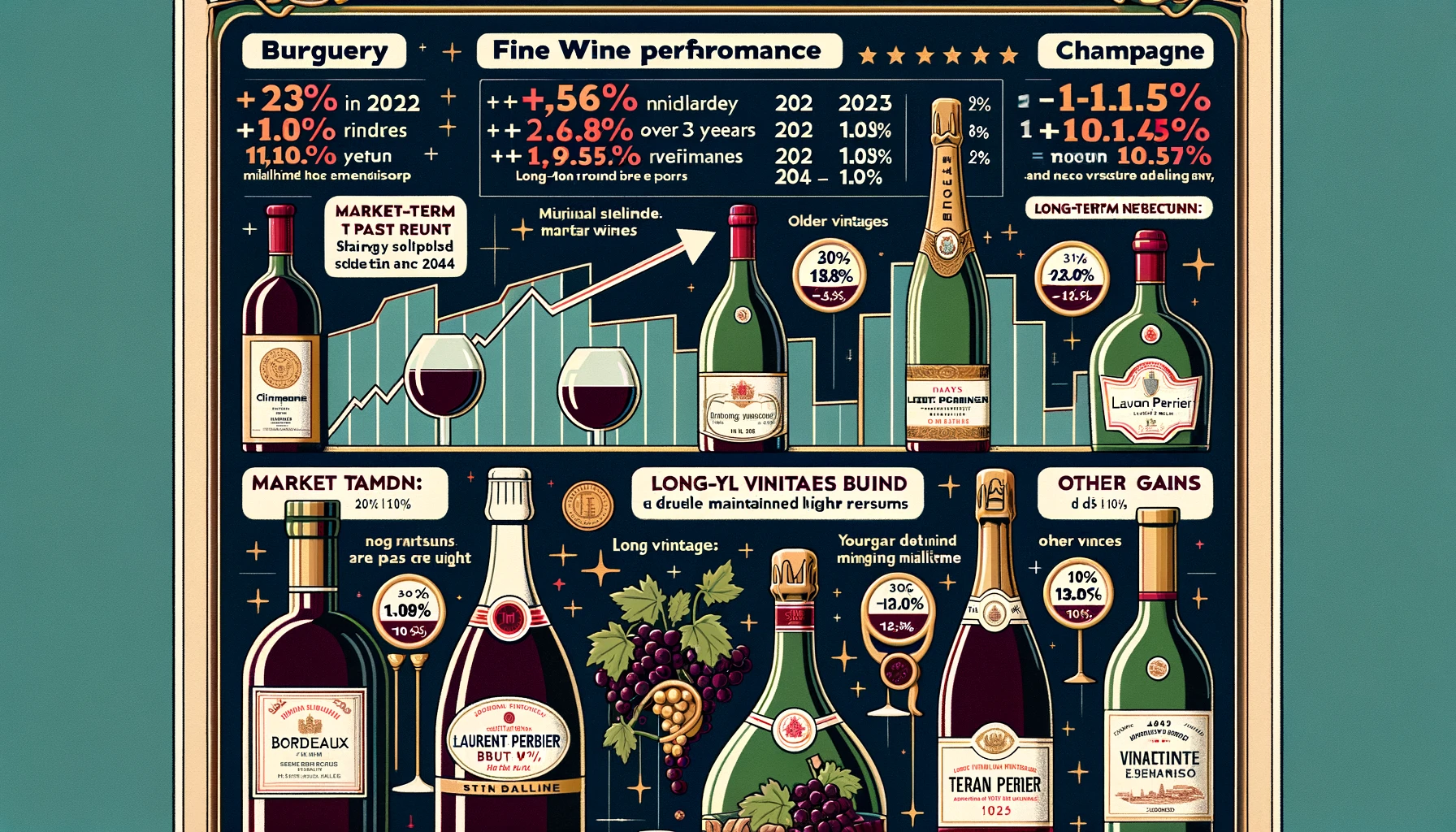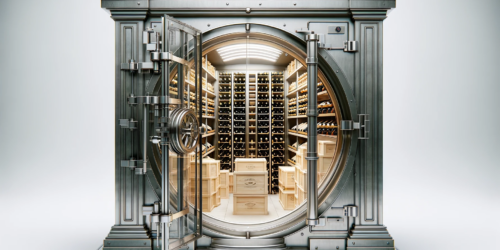UK Wine Investment Guide For Beginners

Forget stuffy spreadsheets and yawn-inducing charts, folks! We’re talking liquid assets that sing on the palate and jingle (hopefully) in your pocket: wine investment, baby!
Imagine this: instead of boring old stocks and bonds, your stash boasts bottles with names like Chateau Margaux and Petrus. No dusty vaults, just climate-controlled bonded warehouse for your vino treasures. And the best part? These beauties get better with age, just like a good joke (that you actually understand). So when it comes to selling your wine collection, you should be quite the expert in the process.
UK Wine Investment For Beginners | Summary
- Find a reputable wine merchant, broker or online platform to guide you.
- Ensure you are buying known investment grade wines.
- Have a bonded warehouse ready and keep the wine stored in your own name.
- Sit Tight and potentially grow your portfolio over time.
- Sell your wine.
Where To Buy Wine As An Investment
To buy fine wine, especially for investment purposes, it’s essential to approach reputable sources that guarantee authenticity and quality. Reputable wine merchants are a primary resource; they offer expert advice, access to high-quality wines, and often provide provenance and storage history. Experienced merchants can guide you through the complexities of vintage quality, regional characteristics, and investment potential.
Wine brokers are another reliable option. They specialize in sourcing rare and investment-grade wines. Brokers can be particularly useful for finding specific wines or for advice on building a diverse and valuable wine portfolio. They often have access to private sales and can navigate the intricacies of the wine market on your behalf.
Online platforms dedicated to fine wine sales are increasingly popular. These platforms offer a wide selection of wines, complete with detailed information about each bottle. They often feature user reviews and ratings, which can be helpful in making informed decisions. However, it’s crucial to verify the credibility and track record of these platforms to ensure the authenticity of their offerings.
The Role of Wine Funds in Investment Portfolios
In the UK, fine wine investment funds operate by pooling investors’ capital to purchase a portfolio of investment-grade wines. This approach allows investors to benefit from the expertise of fund managers who have deep knowledge and experience in selecting wines with potential for appreciation. These funds generally aim for long-term growth and offer investors an opportunity to diversify their investment portfolios with an asset class that is less correlated with traditional financial markets.
Types of Investment Wines
Investment-grade wine refers to a select category of fine wines that are particularly valued for their potential to appreciate in value over time. These wines typically possess a combination of critical acclaim, proven track record of increasing in price, and strong demand in the secondary market. They often originate from prestigious winemaking regions, such as Bordeaux and Burgundy in France, and are produced by renowned vineyards with a history of excellence. Investment-grade wines are characterized by their rarity, exceptional quality, and aging potential. Collectors and investors seek these wines for their portfolio, not only for their financial promise but also for their prestige and potential for personal enjoyment.
Examples include:
- Château Lafite Rothschild – A prestigious estate in the Bordeaux region of France, known for producing some of the world’s most sought-after and expensive wines.
- Domaine de la Romanée-Conti (DRC) – This Burgundy estate is famous for producing some of the finest and most expensive Pinot Noir wines.
- Screaming Eagle – A highly coveted cult wine from Napa Valley, California, known for its Cabernet Sauvignon.
- Château Margaux – Another top estate from Bordeaux, producing wines that are prized for their elegance, complexity, and longevity.
- Penfolds Grange – An iconic Australian wine, particularly the Shiraz, which is known for its rich flavor and aging potential.
- Ornellaia – A renowned Italian wine from the Bolgheri region, celebrated for its superb quality and aging ability.
- Pétrus – A highly prestigious Merlot-based wine from the Pomerol region in Bordeaux, known for its richness and depth.
Provenance
Provenance is crucial in wine investment as it verifies a wine’s history and authenticity. It includes details about the wine’s origin, production, and ownership chain. Provenance ensures the wine’s quality, maintains its value, and boosts investor confidence, especially in a market where the rarity and pedigree are paramount.
Wine Fraud
Awareness of fake wine and wine fraud is essential in the fine wine market. Counterfeit wines can significantly undermine investment value and damage reputations. Investors must exercise due diligence, verify authenticity, and rely on reputable sources to avoid costly mistakes and ensure the integrity and profitability of their wine portfolio.
Average Returns On Wine Investments | Based on 2023

The fine wine market in 2023 experienced varied returns across different regions and wine categories, reflecting both market resilience and sensitivity to macroeconomic factors. For instance, Burgundy, a long-time favorite for wine investment, saw an average price rise of over 34% in 2022, but faced a decrease of 6.68% in 2023. Despite this, Burgundy’s long-term appeal remains strong, with an annualized return of more than 10.5% since 2004. On the other hand, Champagne, another highly traded wine, experienced a correction in 2023 with a decline of 11.15% (see wine investment insight here), although it had seen nearly a 50% increase over the previous three years.
Italian wines showed notable resilience in 2023. Despite a slight correction, they largely maintained higher prices overall for the year. In contrast, Bordeaux wines experienced a marginal decrease of 0.09% in 2023, reflecting a shift towards older vintages and established brands in uncertain economic times.
Analysis of the overall market performance by vintage revealed that older, more mature vintages demonstrated more resilience, while younger vintages, especially those from 2017 to 2020, faced the largest decreases, declining by over 10% on average in 2023. This trend aligns with a preference for immediate consumption and readiness to drink, rather than stocking up on newer vintages that require aging.
Despite these fluctuations, specific wines and regions still delivered healthy gains. For example, Laurent Perrier Brut Millesime and Egly-Ouriet Brut Millesime saw increases of 22.0% and 18.4%, respectively. Additionally, some Rioja wines and Tenuta San Guido’s Guidalberto also showed significant gains, indicating a sustained demand for quality wines.
Overall, the fine wine market in 2023 illustrates the importance of strategic selection and the potential for long-term investment growth, even amid shorter-term market corrections and economic uncertainties
Analyzing the Market for Investment Wines
Potential wine investors have a wealth of resources available in the form of magazines and websites that specialize in the wine market. Here are some notable ones:
- Decanter – A leading wine magazine offering in-depth reviews, news, and features about the global wine industry. It’s a go-to for wine enthusiasts and investors alike.
- Wine Spectator – This magazine provides wine ratings, wine news, tasting notes, and detailed information about wineries, making it a valuable resource for investors.
- Liv-ex – The London International Vintners Exchange offers a comprehensive online platform with market insights, data, and analysis on fine wine pricing and trends, crucial for informed investment decisions.
- Vinous – A wine website offering extensive reviews, wine tasting notes, and critical analysis of wine regions, which can guide investment choices.
- The Wine Advocate – Founded by Robert Parker, this publication is famous for its 100-point wine rating system and offers thorough wine reviews and ratings.
- Wine-Searcher – This website is an excellent tool for comparing wine prices across different retailers, providing an overview of the market and individual wine values.
Each of these platforms provides unique insights and information that can help in understanding the wine market, assessing investment opportunities, and staying updated with the latest trends and developments.
The Importance Of Wine Storage
Storing fine wine in a bonded warehouse is a critical aspect of wine investment, offering significant tax benefits and ensuring optimal storage conditions. In a bonded warehouse, wines are stored ‘under bond,’ meaning they are kept in a tax-suspended state. This arrangement is highly beneficial for investors because it defers the payment of duties and VAT until the wine is removed from the warehouse or sold. If the wine is sold while still in bond and exported, these taxes may be completely avoided, making it a tax-efficient strategy for international trading.
Two notable examples of bonded wine storage facilities are London City Bond (LCB) and Octavian Vaults.
- London City Bond is renowned for its secure, climate-controlled storage conditions, providing an ideal environment for the aging of fine wines. Their state-of-the-art facilities and expertise in handling valuable wines make them a preferred choice for investors.
- Octavian Vaults is another distinguished name in wine storage, known for its optimal cellar conditions and high security. Located in a former quarry, Octavian boasts natural insulation and humidity control, providing the perfect environment for preserving and aging fine wines. Their services are tailored to meet the unique needs of wine collectors and investors, ensuring that the wines not only retain their quality and value but potentially appreciate over time.
For wine investors, choosing a reputable bonded warehouse like LCB or Octavian Vaults not only offers financial advantages in terms of tax savings but also ensures peace of mind regarding the safety and preservation of their valuable investment.
The Process of Selling Wine Investments
Selling fine wine involves a series of steps to ensure that the transaction is smooth, transparent, and beneficial for both parties. Here’s a breakdown of the process:
Consult a Reputable Merchant or Broker:
Begin by speaking with a reputable wine merchant or broker. These professionals have the expertise and market knowledge to guide you through the selling process. They can help assess the value of your wine and provide insights into the current market demand.
Decide on the Sale Method:
Determine if the merchant or broker will act as a middleman to facilitate the sale to a third party (brokering), or if they will purchase the wine directly from you. Each option has its advantages and potential drawbacks, depending on your specific needs and the wine’s value.
Formalise an Agreement:
Once you decide on the method of sale, it’s important to get a formal agreement in place. This agreement should detail the terms of the sale, including the price, any commissions or fees, and the responsibilities of each party.
Conduct Your Own Condition Report:
Before transferring the wine, it’s advisable to get your own condition report done. This report should document the wine’s current state, including the label condition, fill level, and any signs of damage or aging. This step is crucial for verifying the wine’s condition and establishing its provenance.
Transfer the Wine:
After completing the condition report, you will need to transfer the wine to the merchant or broker. They will then conduct their own condition report to confirm its state and ensure it matches the description provided. This step is essential for maintaining the integrity of the transaction.
Collection of Funds:
Once the wine is received and its condition verified, the final step is the collection of funds. Payment terms should be outlined in the initial agreement. In the case of brokering, payment is typically received after the broker sells the wine to a third party.
Factors That Determine The Price of Fine Wine
There are several factors that determine the price of your fine wine investments. Here are some of them:
- Brand and Producer Reputation: The profile and market position of the wine estate or chateau significantly influence the wine’s value. Renowned producers, such as Domaine de la Romanée-Conti (DRC), Pétrus, Château Mouton Rothschild, and regions like Burgundy and Bordeaux, are highly sought after.
- Critical Opinion and Quality Scores: Reviews and scores from leading wine critics can dramatically affect a wine’s demand and value. Exceptional ratings, particularly from influential critics like Robert Parker, can rapidly drive up both the release price and long-term value of a wine.
- Vintage Quality: The quality of the vintage plays a vital role. High-quality vintages can add a premium to prices, while mid and off vintages might offer value and diversification potential.
- Age and Maturity: As a wine matures, its quality typically improves, and its price generally rises. The drinking window, or the period when the wine reaches full maturity, is also a crucial factor.
- Rarity: The rarity of a wine, especially those with very low production levels, can command extraordinary prices. As wines are consumed, the supply becomes rarer and more valuable.
- Provenance and Storage: The history of a wine’s ownership and storage conditions is crucial in determining its quality and value. Wines with clear provenance, especially those acquired directly from the producer’s cellar, often command a premium.
- Regional Trends: Regional trends can affect fine wine values, with portfolios often diversified by region to optimize returns. Key wine-growing regions include France’s Bordeaux, Burgundy, Champagne, and Rhone, Italy’s Tuscany and Piedmont, and Napa and Sonoma in California.
- Market Strength and Economic Factors: The overall performance of the fine wine market and broader economic conditions, including political events and tax status, can influence wine prices. Fine wine tends to be more stable than equities and financial markets and often performs well during economic downturns.
- Weather Conditions and Harvest Yields: Weather conditions greatly impact the quality of grapes and the timing of harvest, influencing the quantity and quality of the wine produced.
- Emerging Markets: The rise in wealth in emerging economies has increased the consumption and demand for exceptional wines, affecting the market supply and demand dynamics.


